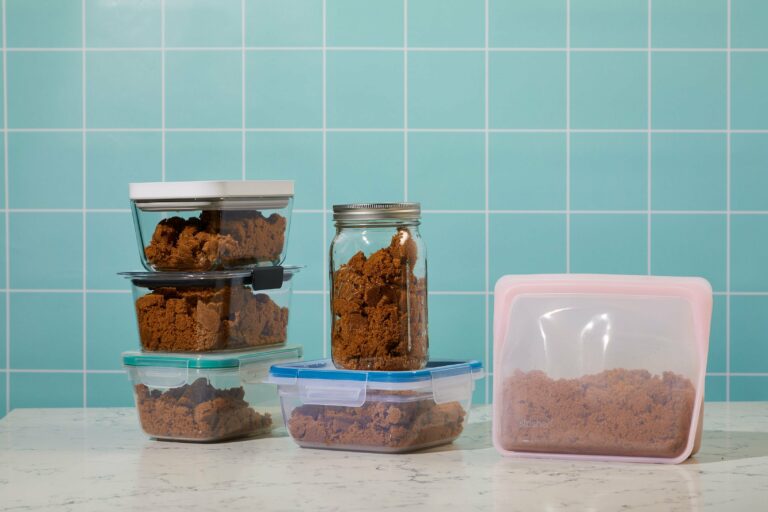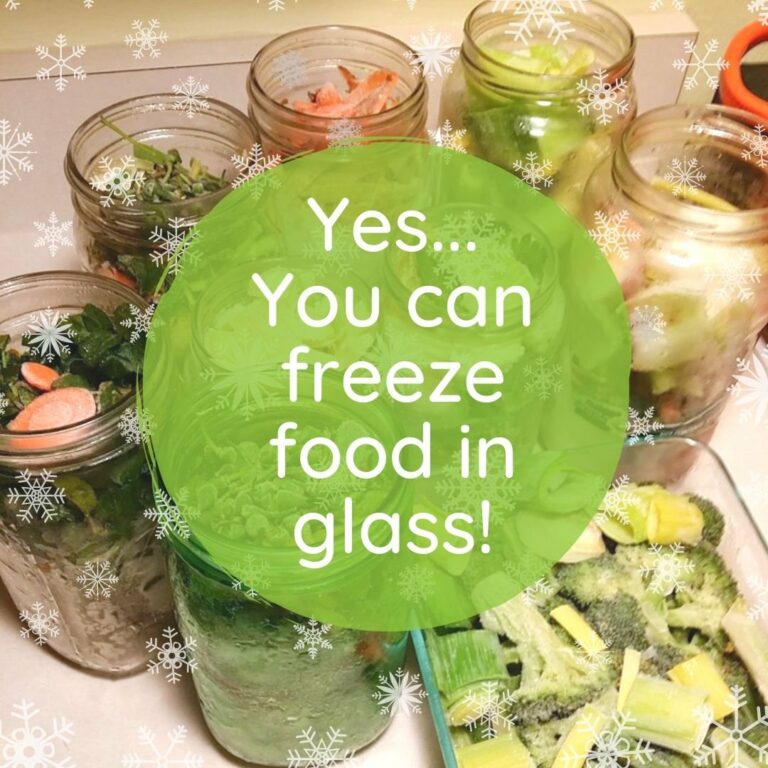How to Package Meat for Freezer: A Step-By-Step Guide
Are you on the hunt for a reliable way to package meat for long-term storage in the freezer, guaranteeing both quality and freshness? Look no further! This article will walk you through the process of correctly packaging meat for the freezer, ensuring that you can enjoy delectable preserved cuts whenever you please.
From choosing the right materials to expertly sealing your packages, we’ve got you covered. So let’s jump right in and discover how to package meat for the freezer, allowing you to stock up on your preferred cuts and conveniently store them for future meals.
How to Package Meat for Freezer
When it comes to preserving meat for longer periods, proper packaging for the freezer is key. By following the right methods and techniques, you can ensure that your meat stays fresh, flavorful, and safe to consume. In this article, we will explore everything you need to know about packaging meat for the freezer. Let’s dive in!
Selecting the Right Cuts of Meat:
Before you start packaging meat for the freezer, it’s important to choose the right cuts of meat. Here are a few tips to help you make the best selection:
Freshness and Quality
Always choose fresh, high-quality meat to ensure optimal taste and texture. Look for meat that is bright in color, with no signs of discoloration or foul odors.
Size and Portioning
Consider the size of your freezer and the number of servings you typically need. It’s a good idea to portion the meat into smaller sizes that can easily be used in individual meals. This will also help with faster thawing.
Fat Content
Different cuts of meat have varying fat content, which can affect their quality during freezing. Leaner cuts tend to freeze better, while fattier cuts may become rancid or develop an off-flavor. Trim excess fat before packaging.
Gather the Necessary Supplies:
To properly package meat for the freezer, you’ll need a few essential supplies. Here’s a list of items you should have on hand:
Freezer-Grade Packaging Materials:
Invest in high-quality freezer-safe materials such as freezer paper, heavy-duty aluminum foil, or vacuum-sealed bags. These materials are designed to prevent freezer burn and protect the quality of the meat.
Labels and Markers:
Labeling each package with the type of meat, cut, and date will help you keep track of the contents and ensure proper rotation. Use permanent markers or freezer-safe labels that won’t smudge or fade.
Cutting Board and Knife:
A sturdy cutting board and a sharp knife are essential for trimming excess fat, portioning the meat, and preparing it for packaging.
Preparation and Packaging:
Now that you have everything you need, it’s time to prepare the meat and package it for the freezer. Follow these steps for optimal results:
Trim Excess Fat
Before packaging, trim any excess fat from the meat. This not only improves the quality but also prevents off-flavors during freezing and thawing.
Wrap in Freezer Paper
If using freezer paper, cut it into large enough sheets to fully wrap the meat. Place the meat in the center of the paper, fold the sides over, and fold the ends to secure the package. Make sure it is tightly wrapped to prevent air exposure.
Use Aluminum Foil
For cuts that may require longer storage or extra protection, consider using heavy-duty aluminum foil. Wrap the meat tightly to avoid air contact and freezer burn.
Vacuum-Sealed Bags
Vacuum-sealed bags provide excellent protection against freezer burn and extend the storage life of meat. Follow the manufacturer’s instructions to securely seal the meat within the bags.
Portion and Label
If you’re packaging meat into smaller portions, ensure that each package contains enough for a single meal. Label each package with the type of meat, cut, and date before placing it in the freezer.
Storing and Organizing in the Freezer:
Proper storage and organization of your packaged meat in the freezer are crucial to maintain quality and avoid unnecessary waste. Here are a few tips to help you:
Temperature and Placement
Set your freezer to the recommended temperature (-18°C or 0°F) and store the meat in the coldest part of the freezer. This ensures a consistent freezing temperature and helps prevent temperature fluctuations.
Avoid Overcrowding
Do not overload your freezer with too much meat at once. Leave enough space between packages for proper airflow, which aids in maintaining a constant temperature.
FIFO: First In, First Out
Practice the “First In, First Out” method by placing the newest packages at the back of the freezer and the older ones at the front. This way, you will use the oldest packages first, preventing them from being forgotten and reducing waste.
Storage Duration
Different types of meat have varying storage durations in the freezer. While beef and pork can typically be stored for 6-12 months, poultry and ground meat should be used within 3-4 months.
Thawing and Safe Handling:
Thawing meat properly is essential for both food safety and maintaining quality. Here’s how to thaw meat safely:
Refrigerator Thawing
The safest method for thawing meat is to place it in the refrigerator. Allow enough time for the meat to thaw completely, based on its size and thickness. This slow thawing process helps preserve the quality and minimizes the risk of bacterial growth.
Cold Water Thawing
If you’re in a hurry, you can use the cold-water thawing method. Submerge the wrapped meat in a leak-proof plastic bag and place it in a sink or large container filled with cold water. Change the water every 30 minutes until the meat is thawed.
Never Thaw at Room Temperature
Thawing meat at room temperature promotes bacterial growth and increases the risk of foodborne illnesses. Avoid leaving meat on the countertop for thawing.
Safe Handling Practices
Always practice good hygiene and safe food handling when packaging, thawing, and cooking meat. Wash your hands thoroughly before and after handling raw meat, and clean all utensils and surfaces with hot, soapy water to avoid cross-contamination.
Freezer Maintenance and Defrosting:
To ensure that your freezer operates efficiently and maintains optimal conditions for meat storage, regular maintenance and defrosting are necessary. Here are a few tips:
Regular Cleaning
Clean the freezer regularly to remove any spills or debris that can affect the quality of stored meat. Follow the manufacturer’s instructions for cleaning and avoid using harsh chemicals.
Defrosting
When ice begins to accumulate in your freezer, it’s time to defrost it. Turn off the freezer, remove all the food, and allow the ice to melt naturally. Clean and dry the freezer thoroughly before restocking with meat.
Temperature Monitoring
Use a freezer thermometer to monitor the temperature regularly. This helps ensure that the freezer remains at the optimal temperature for meat storage.
How to wrap any meat to last forever and prevent freezer burn!
Faqs for How to Package Meat for Freezer:
When packaging meat for the freezer, it’s important to follow proper guidelines to maintain freshness and prevent freezer burn. Start by wrapping the meat tightly in plastic wrap or aluminum foil to minimize air exposure.
For an added layer of protection, place the wrapped meat in a resealable freezer bag or airtight container. Be sure to label each package with the type of meat, cut, and date of freezing.
Additionally, remove as much air as possible from the packaging to reduce the risk of freezer burn. Finally, store the packaged meat in the coldest part of the freezer to maintain quality.
While some store-bought meats come in packaging suitable for freezing, it’s generally recommended to transfer the meat to more durable packaging.
The original packaging may not provide adequate protection against freezer burn and can easily tear or get damaged in the freezer.
It’s best to wrap the meat in plastic wrap or aluminum foil and then place it in a freezer bag or airtight container to ensure the highest quality and prevent any potential contamination.
It’s a good idea to trim excess fat from meat before freezing. Fat can become rancid over time and affect the quality and taste of the meat. Trimming the fat reduces the risk of spoilage and helps preserve the flavor and texture.
However, if you prefer to keep the fat for cooking purposes, you can choose to freeze the meat with it. Just keep in mind that it may alter the taste and texture of the meat when thawed.
The storage time for meat in the freezer depends on the type and cut of meat. Generally, raw ground meat can be stored for 3-4 months, while whole cuts like roasts or steaks can be stored for 6-12 months.
However, it’s important to note that the quality of the meat may degrade over time even if it remains safe to eat. To ensure the best flavor and texture, it’s recommended to consume frozen meat within the recommended time frames.
Absolutely! Cooked meat can be safely frozen for later consumption. Allow the cooked meat to cool completely before packaging it for the freezer. Similar to raw meat, wrap it tightly in plastic wrap or aluminum foil and then place it in a freezer bag or airtight container. Remember to label the package with the type of meat, dish, and freezing date. When reheating, ensure the meat is heated to a safe internal temperature to eliminate any potential bacteria.
To prevent freezer burn on meat, it’s essential to minimize air exposure. Use proper packaging techniques such as wrapping the meat tightly, removing excess air from the packaging, and using airtight containers or freezer bags.
Avoid placing warm or hot meat directly into the freezer, as it can create condensation, leading to freezer burn. Additionally, try to consume the oldest frozen meat first and avoid frequent thawing and refreezing, as this can contribute to moisture loss and freezer burn.
Final Thoughts
Packaging meat properly for the freezer is crucial to maintain its quality and prevent freezer burn. By following a few simple steps, you can ensure that your meat stays fresh and safe for longer periods. First, wrap the meat tightly in plastic wrap or aluminum foil, removing as much air as possible. Then, place it in a resealable freezer bag, squeezing out any excess air before sealing. Lastly, label the package with the date and type of meat. With these steps, you can effectively package meat for the freezer and extend its shelf life.



